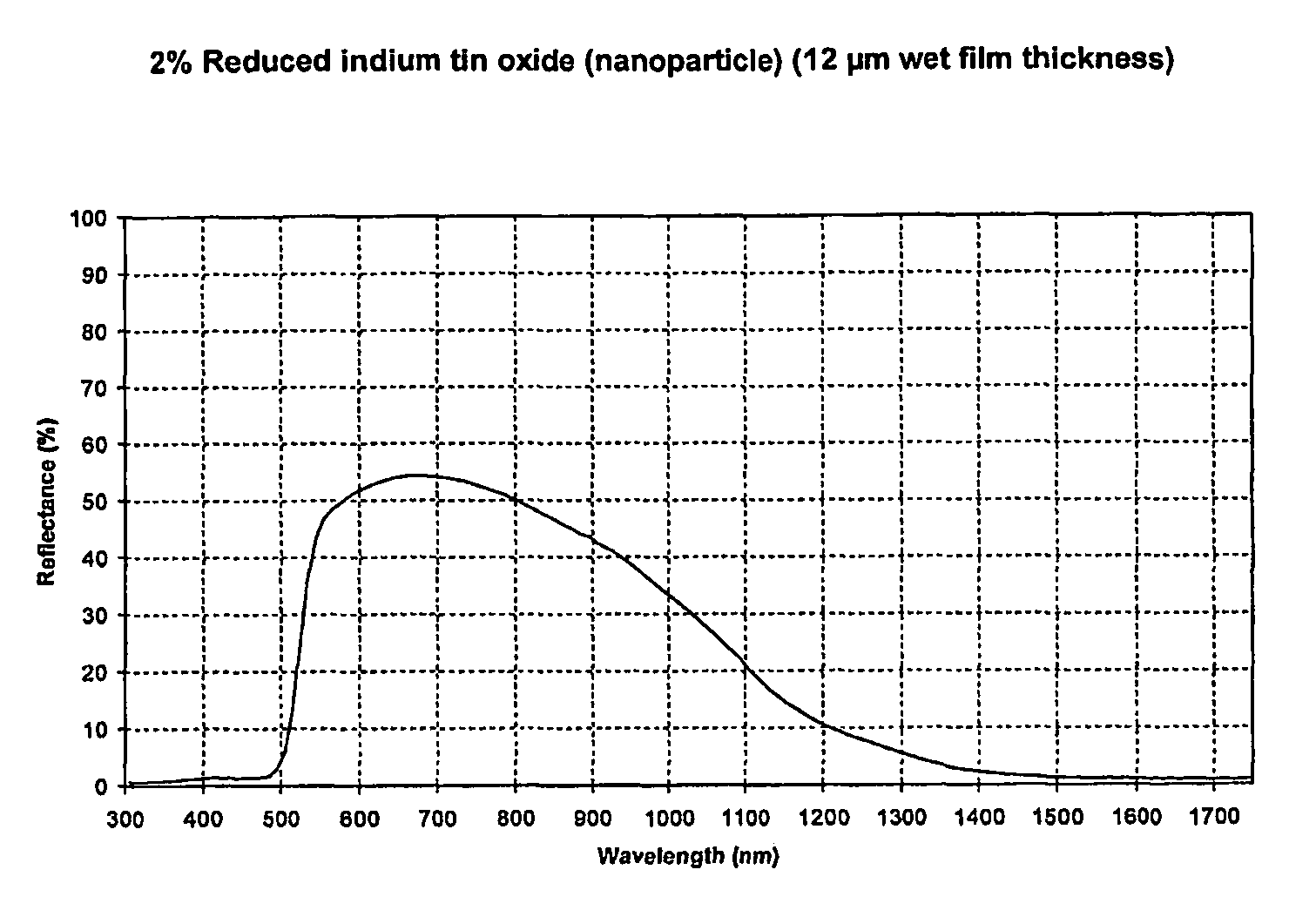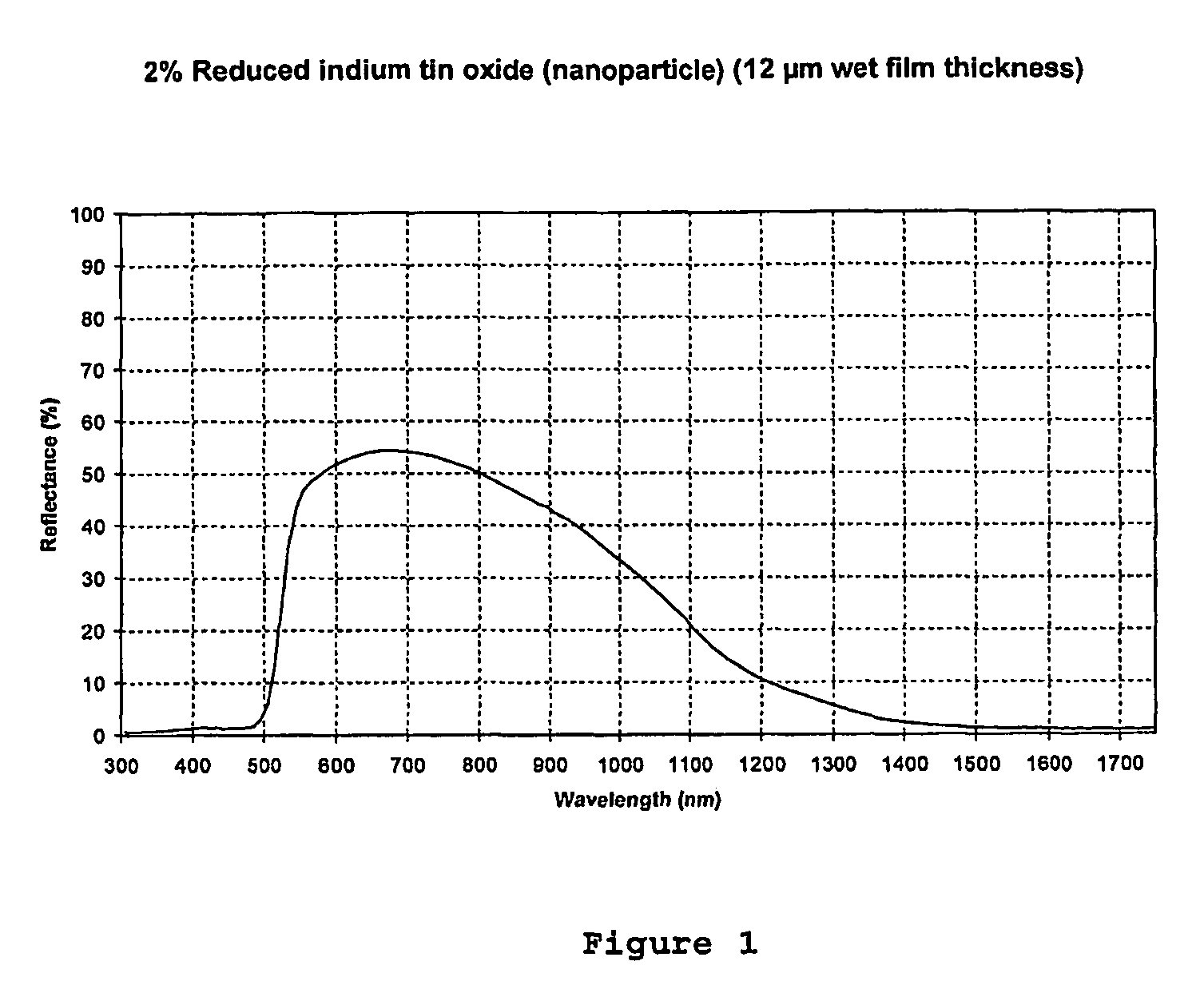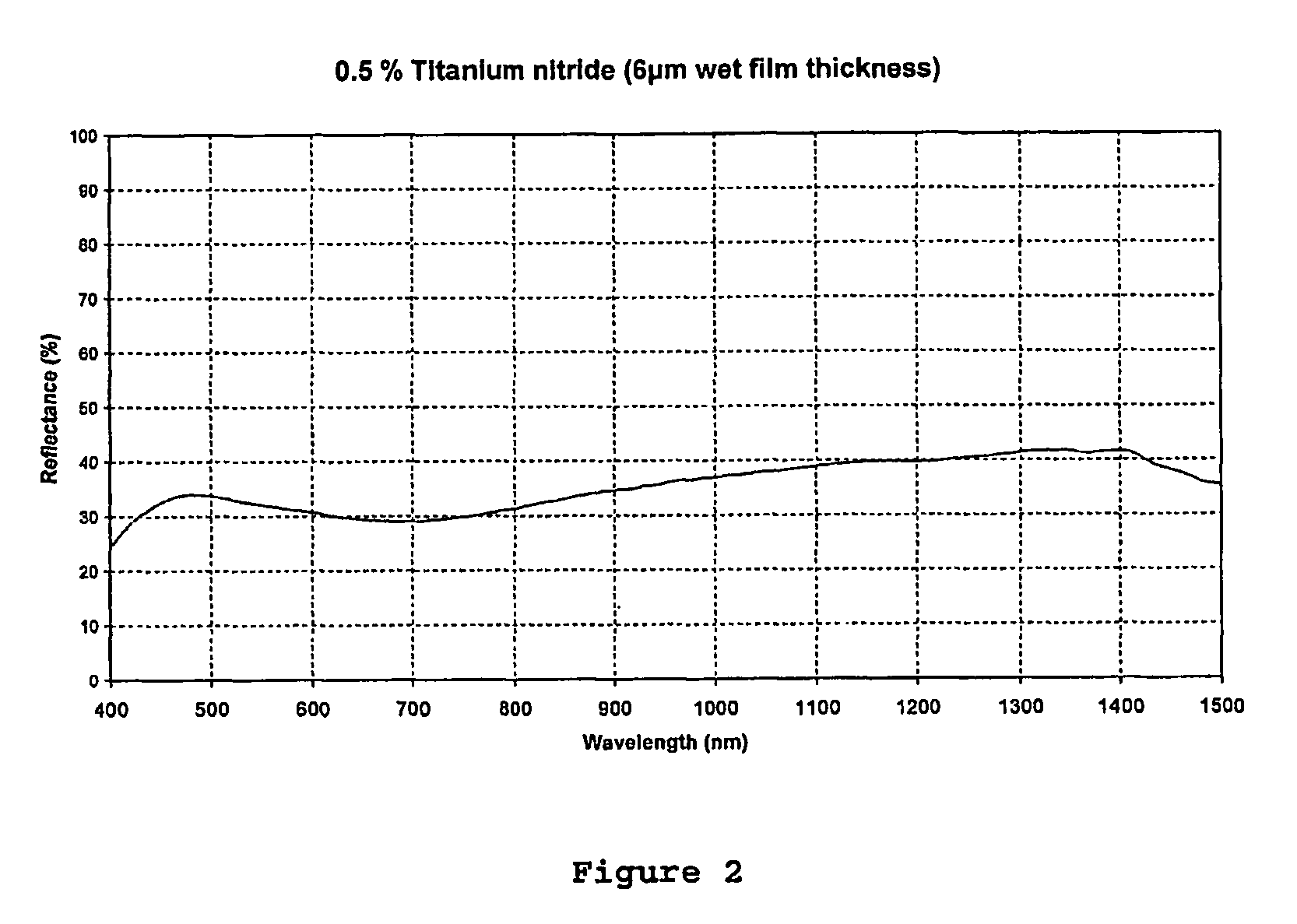Security inks containing infrared absorbing metal compounds
a technology of inks and metal compounds, which is applied in the field of security inks containing infrared absorbing metal compounds, can solve the problems of poor light fastness of compounds, difficult synthesis of compounds, and high cost, and achieves the effects of improving light fastness, reducing cost, and improving light fastness
- Summary
- Abstract
- Description
- Claims
- Application Information
AI Technical Summary
Benefits of technology
Problems solved by technology
Method used
Image
Examples
example 1
[0112]An offset security ink was prepared by dispersing an infrared-absorbing pigment in a commercially available offset ink formulation. Thus, nanoparticle reduced indium tin oxide (Nano Products Corporation, 30 nm average particle size, determined by surface area analysis using the Brunauer, Emmett and Teller method, and crystallite size measurements by X-ray diffraction), (0.5 g) was dispersed in a IR invisible transparent white offset ink base (24.5 g) (Gleitsmann Security Inks GmbH) on a triple roll mill; the offset ink base being formulated as follows in Table 1:
[0113]
TABLE 1Offset ink base formulationComponentWeight (%)Varnish*67.0Pigment (white)4.5Calcium carbonate9.2Linseed oil13.7Polyethylene wax5.0Hydroquinone0.3Drier (10% manganese octoate)0.2Drier (18% cobalt octoate)0.1
[0114]The varnish was composed of a modified phenolic resin (40%), linseed oil (20%), aromatic free mineral oil (boiling range 280-310° C.) (20%), aromatic free mineral oil (boiling range 260-290° C.) (1...
example 2
[0117]The process described in Example 1 was repeated, but in this case an ink containing a reduced indium tin oxide (nanoparticle, as Example 1) concentration of 30% (7.5 g in 17.5 g of transparent white ink base) was formulated and used to prepare proof prints on Velin paper at a film thickness of 2.0 gm−2; the printed images being almost colourless. The printed images exhibited an IR absorbance of 51.0% at a wavelength of 1065 nm.
example 3
[0118]The process described in Example 1 was repeated, but in this case an orange base ink containing a reduced indium tin oxide (nanoparticle, as Example 1) concentration of 20% (5 g in 20 g of orange IR transparent ink base) was formulated and used to prepare proof prints on Velin paper at a film thickness of 2.0 gm−2; the printed images being matched to similar prints that had been prepared with inks formulated from the orange ink base in the absence of the IR absorber. The printed orange images exhibited an IR absorbance of 51.0% at a wavelength of 1210 nm.
PUM
| Property | Measurement | Unit |
|---|---|---|
| Fraction | aaaaa | aaaaa |
| Particle size | aaaaa | aaaaa |
| Particle size | aaaaa | aaaaa |
Abstract
Description
Claims
Application Information
 Login to View More
Login to View More - R&D
- Intellectual Property
- Life Sciences
- Materials
- Tech Scout
- Unparalleled Data Quality
- Higher Quality Content
- 60% Fewer Hallucinations
Browse by: Latest US Patents, China's latest patents, Technical Efficacy Thesaurus, Application Domain, Technology Topic, Popular Technical Reports.
© 2025 PatSnap. All rights reserved.Legal|Privacy policy|Modern Slavery Act Transparency Statement|Sitemap|About US| Contact US: help@patsnap.com



